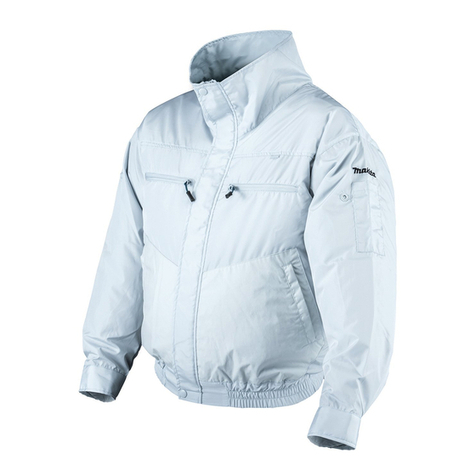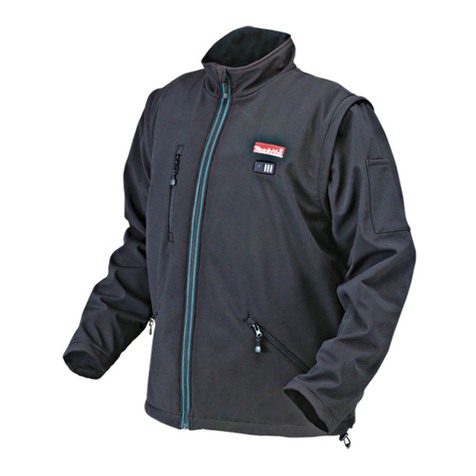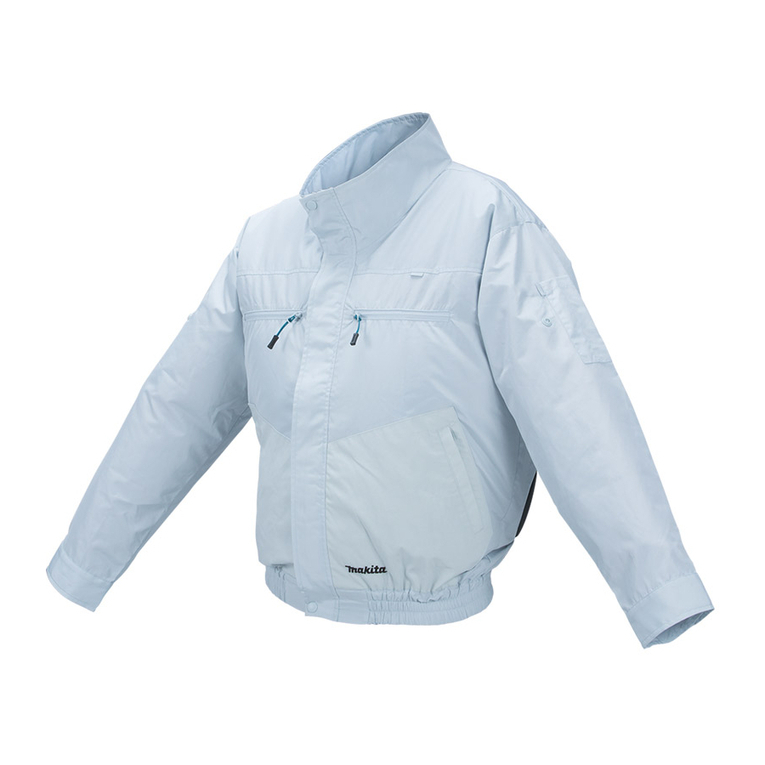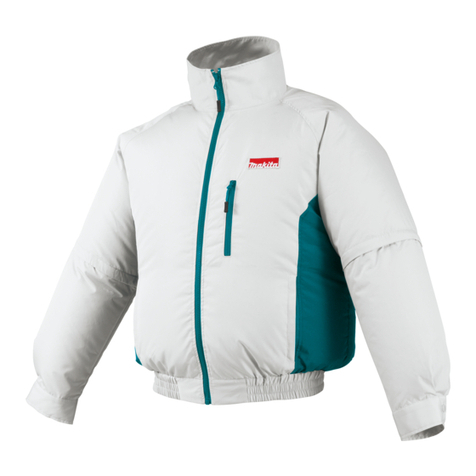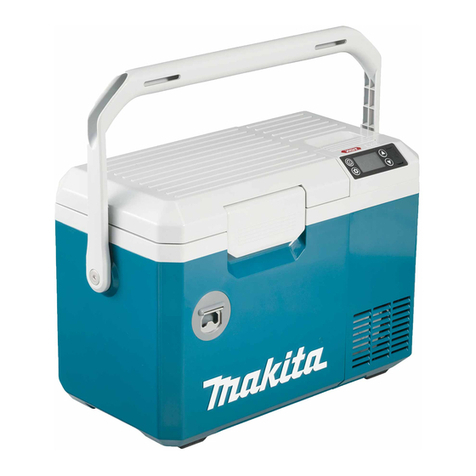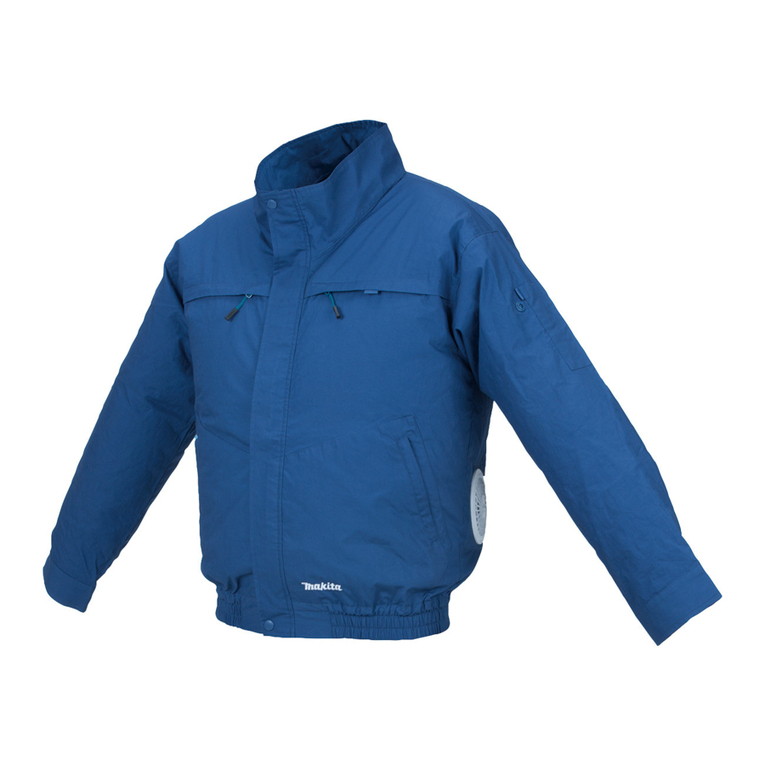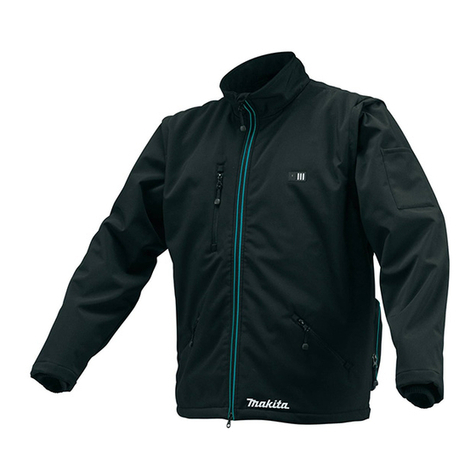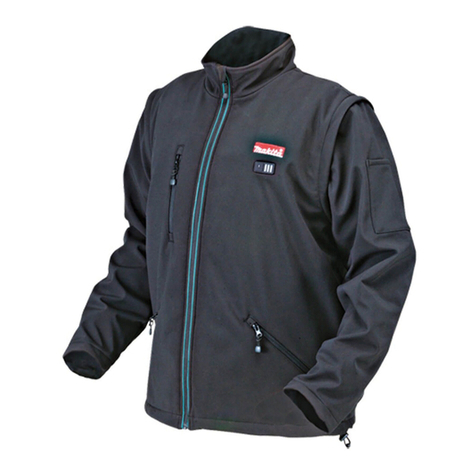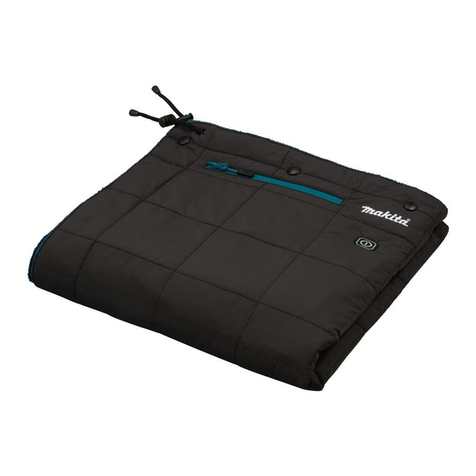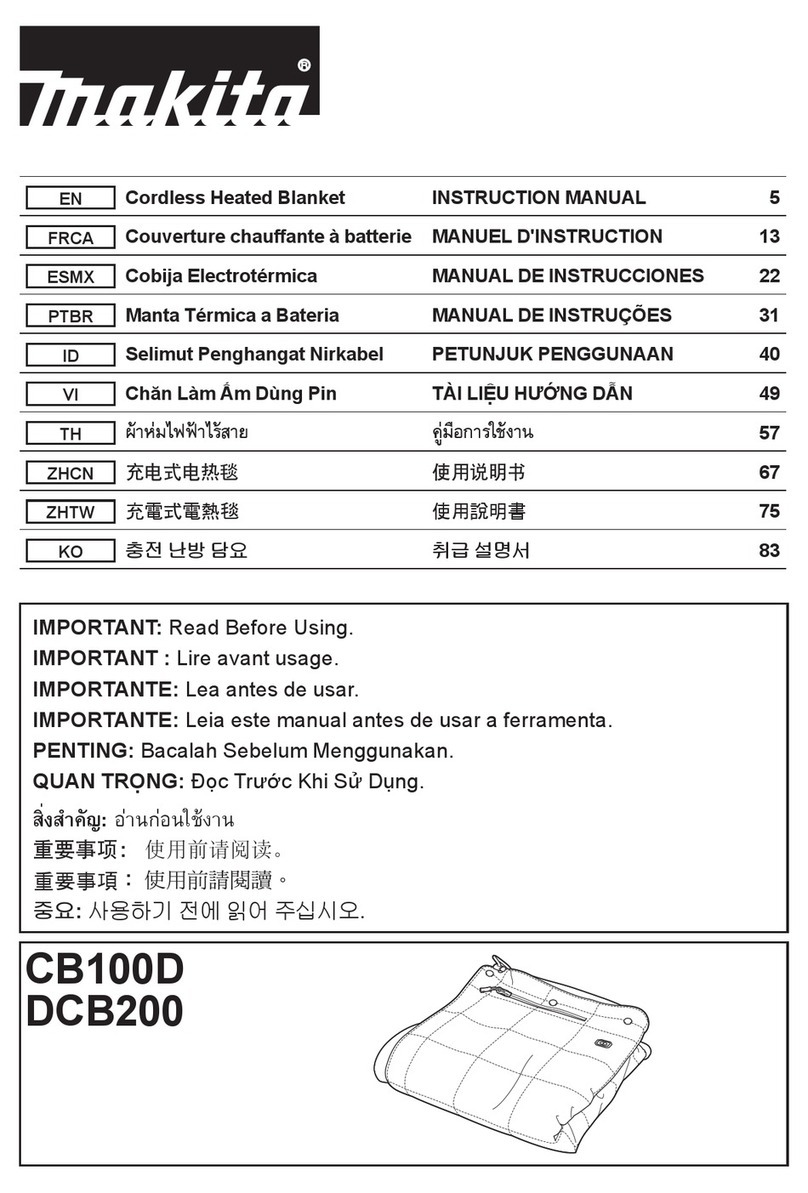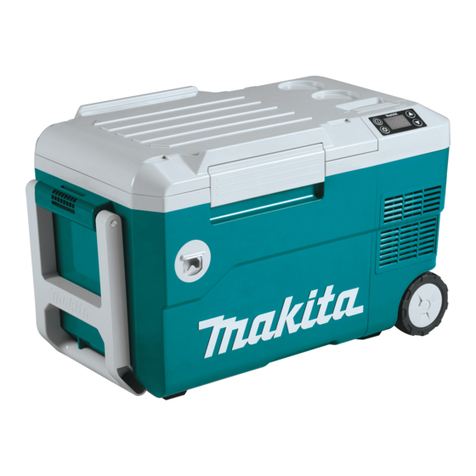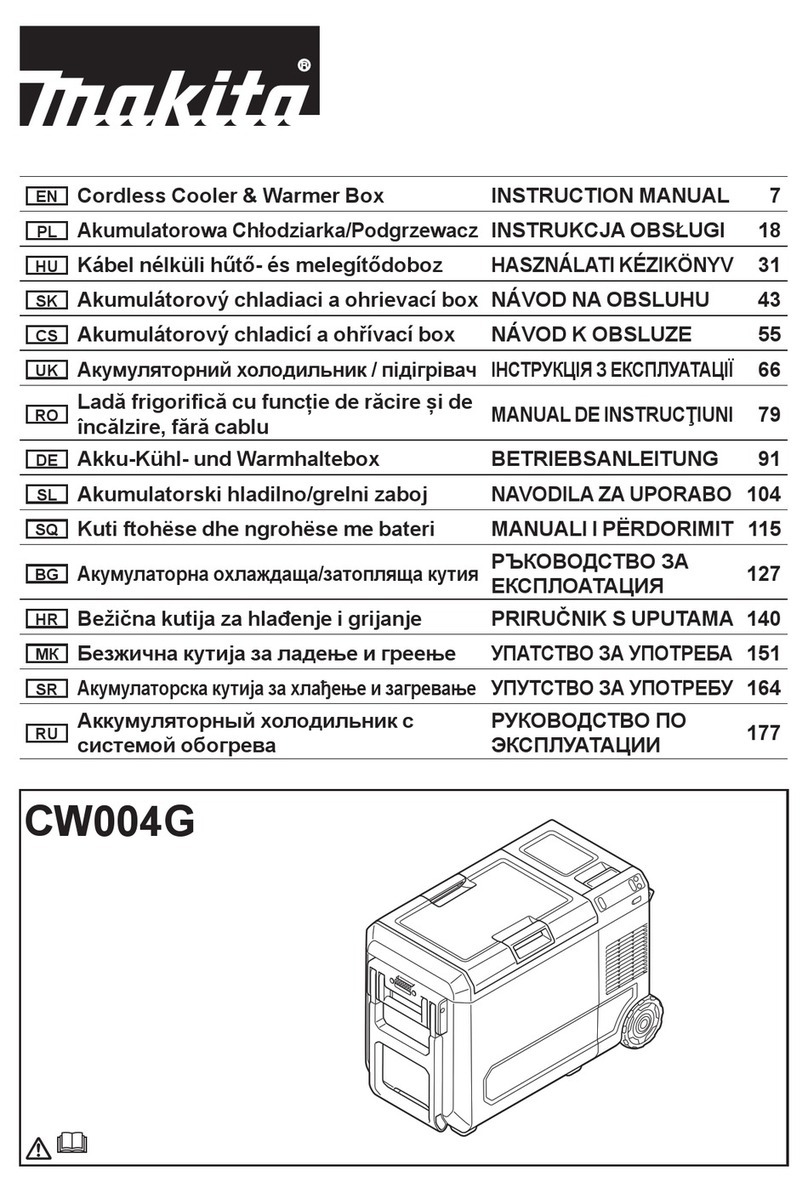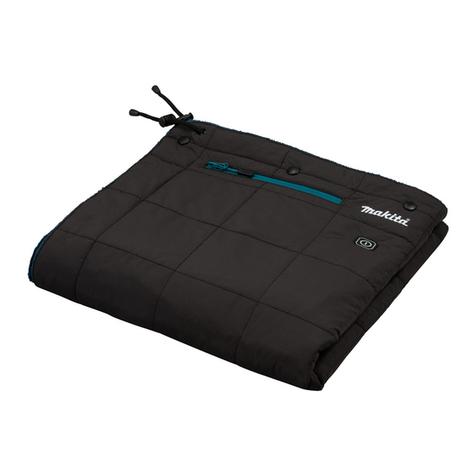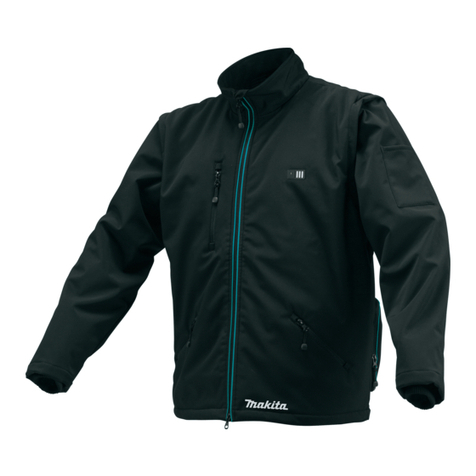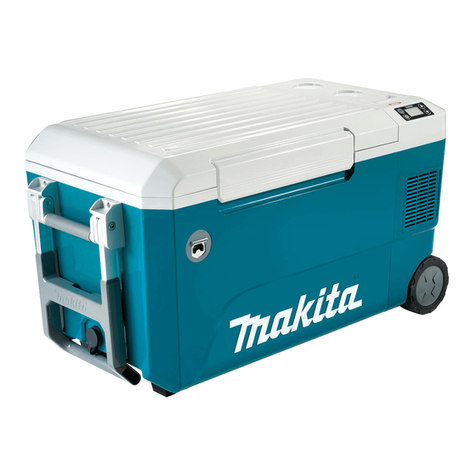8ENGLISH
2. Recharge only with the charger specied by
the manufacturer. A charger that is suitable for
one type of battery pack may create a risk of
re when used with another battery pack.
3. Only use with specically designated batter-
ies. Use of any other battery may create a risk
of injury and re.
4. When the battery pack is not in use, keep it
away from other metal objects, such as paper
clips, coins, keys, nails, screws or other small
metal objects that can make a connection from
one terminal to another.
5. Under abusive conditions, liquid may be
ejected from the battery; avoid contact. If
contact accidentally occurs, ush the affected
area with water.
6. Do not handle the cord and battery with wet or
greasy hands.
7. Do not use the fan jacket when the cord or
plug is damaged.
8. Do not abuse the cord. Do not use the cord
for carrying, pulling or unplugging the jacket.
Keep the cord away from heat, oil, and sharp
edges.
9. Do not leave any cord disconnected while the
battery power is supplied. Small children may
puttheliveplugintheirmouthandcauseinjury.
10. Do not use the supplied cord with appliances
other than the fan unit.
11. Do not insert nails, wires, or other items. into
the USB power supply port. Doing so may cause
shortcircuit,whichcancausesmokeorare.
12. Do not connect the power source to the
USB port. The USB port is only intended for
charging lower voltage devices. Always place
the cover over the USB port when not charging
a lower voltage device. Otherwise there is risk of
re.
Important safety instructions for
battery cartridge
1. Before using battery cartridge, read all instruc-
tions and cautionary markings on (1) battery
charger, (2) battery, and (3) product using
battery.
2. Do not disassemble battery cartridge.
3. If operating time has become excessively
shorter, stop operating immediately. It may
result in a risk of overheating, possible burns
and even an explosion.
4. If electrolyte gets into your eyes, rinse them
out with clear water and seek medical atten-
tion right away. It may result in loss of your
eyesight.
5. Do not short the battery cartridge:
(1) Do not touch the terminals with any
conductive material.
(2) Avoid storing battery cartridge in a con-
tainer with other metal objects such as
nails, coins, etc.
(3) Do not expose battery cartridge to water
or rain.
A battery short can cause a large current
ow, overheating, possible burns and even a
breakdown.
6. Do not store the tool and battery cartridge in
locations where the temperature may reach or
exceed 50 °C (122 °F).
7. Do not incinerate the battery cartridge even if
it is severely damaged or is completely worn
out. The battery cartridge can explode in a re.
8. Be careful not to drop or strike battery.
9. Do not use a damaged battery.
10. The contained lithium-ion batteries are subject
to the Dangerous Goods Legislation require-
ments.
For commercial transports e.g. by third parties,
forwarding agents, special requirement on pack-
aging and labeling must be observed.
For preparation of the item being shipped, consult-
ing an expert for hazardous material is required.
Please also observe possibly more detailed
national regulations.
Tape or mask off open contacts and pack up the
battery in such a manner that it cannot move
around in the packaging.
11. Follow your local regulations relating to dis-
posal of battery.
SAVE THESE INSTRUCTIONS.
CAUTION: Only use genuine Makita batteries.
Use of non-genuine Makita batteries, or batteries that
have been altered, may result in the battery bursting
causingres,personalinjuryanddamage.Itwill
also void the Makita warranty for the Makita tool and
charger.
Tips for maintaining maximum
battery life
1. Charge the battery cartridge before completely
discharged. Always stop tool operation and
charge the battery cartridge when you notice
less tool power.
2. Never recharge a fully charged battery car-
tridge. Overcharging shortens the battery
service life.
3. Charge the battery cartridge with room tem-
perature at 10 °C - 40 °C (50 °F - 104 °F). Let
a hot battery cartridge cool down before
charging it.
4. Charge the battery cartridge if you do not use
it for a long period (more than six months).
